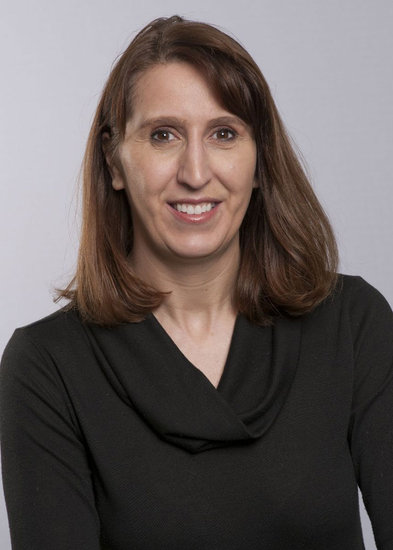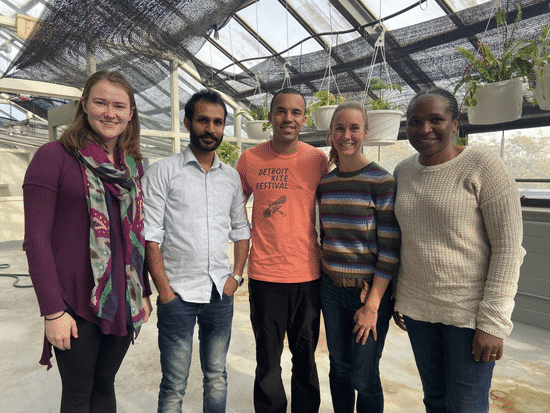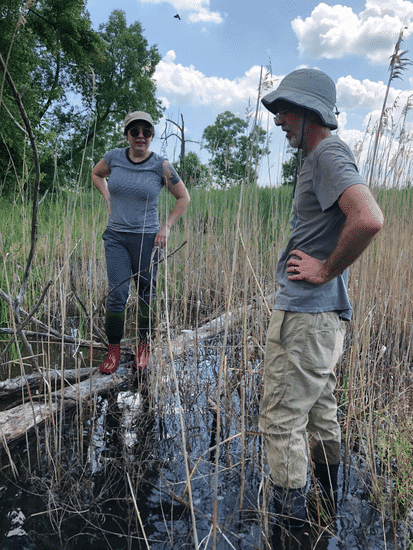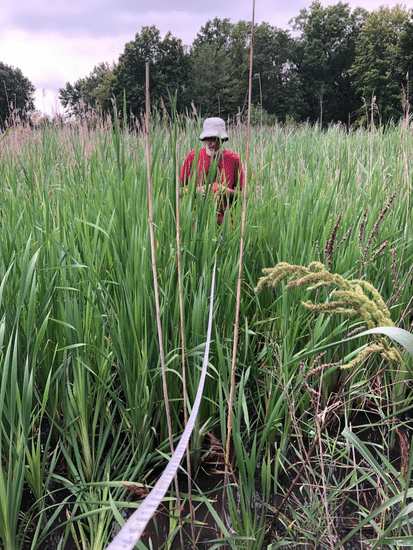Building T-RUST: Taking on the big environmental issues
With abandoned hulks of factories dotting the landscape, aging infrastructure in clear view, and lingering industry-related pollutants in the soil and water, the problems in Detroit and other once-booming manufacturing cities have no easy answers. And that is exactly why Professor Donna Kashian of the Biological Sciences department decided it was high time to begin making inroads.
Her grand plan was to create an expansive program that prepares graduate students to take on big problems by building bridges across disciplines and beyond academia. Called Transformative Research in Urban Sustainability Training (T-RUST), she described the program as generating "more well-rounded, transdisciplinary students able to tackle the complex environmental issues of today." She pitched the idea to the National Science Foundation, which ultimately provided a five-year, $3 million grant to get T-RUST up and running.

Now in its second year, T-RUST has support from faculty across campus, including co-principal investigators in education, engineering, communication and urban planning. Six students entered the program in 2018 and eight in 2019. As students are admitted, they form multi-disciplinary cohorts, and each selects a topic under the umbrella of urban sustainability. For instance, the six students admitted to T-RUST's first year in 2018 split into two cohorts, one focusing on invasive-species management in urban parks, and the other on municipal responses to groundwater contaminants. The eight students admitted in 2019 opted to unite in one large cohort that is centering on green infrastructure.
Once formed, each cohort works together and with related community groups or government agencies, which provide insight into the complexity and challenges of the topic, and the cohort members each adopt an individual hypothesis within the topic's scope and work on it for his or her thesis or dissertation research project. As examples, a member of the green- infrastructure cohort is investigating how to reduce the movement of microplastics through the environment, while a member of the groundwater- contaminant cohort is studying human- health consequences of a specific pollutant. Undergraduate students also participate in T-RUST by taking on directed studies that help the cohort students with their research.

The cohort structure is already proving itself, she remarked. "The students form really tight groups, and it's been really cool to watch them interacting and having interesting conversations between different disciplines about their projects. We're only two years in, but it's been working really well."
T-RUST's multidisciplinary emphasis extends to the curricula, with cohort students complementing their normal coursework with classes from other fields. For instance, a biology student might take classes in communication to learn how to connect with the public, or a pharmaceutical sciences student might take engineering classes to learn how technology can remove drugs from drinking water. T-RUST also offers a dual Ph.D. degree, so students can concurrently earn a second doctorate in urban sustainability in addition to the doctorate in their home discipline by the time they finish the four-year program. "That's a bonus for the students, and it's a fundamental change for the university," Kashian asserted.
Another very important aspect of the T-RUST program lies in fostering an interest in science, technology, engineering and math (STEM) among minority students, who are woefully underrepresented in the sciences, she said. To do that, a number of T-RUST faculty collaborators are visiting K-12 urban schools and engaging young students to open their eyes to the many exciting career opportunities available in STEM fields. "We may not see the benefits of this for 10 years, but hopefully we're creating a pipeline that will create a sustainable number of people moving into these fields," she said.

Although T-RUST has National Science Foundation funding for five years, Kashian believes its interdisciplinary and community-connected components will have much more far-reaching effects, including modernizing education, fostering transformative research of complex issues, and preparing students for jobs inside and outside of academia. She remarked, "I firmly believe we should do a better job of being transdisciplinary and involving the community in the environmental-type questions we ask. That's what led us down this path to create T-RUST.
"She added, "It's been nonstop since we got this grant and started this program, but I have no complaints. I'm happy it's here at Wayne State and that so many people are benefiting from it."
